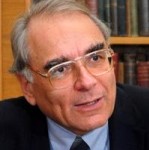JOHN M. RIDLAND (1933–2020)
Once one of his first students at the English Department of the University of California at Santa Barbara, Robyn Bell gave a succinct summary of the life of his former professor of English, the poet and translator John M. Ridland. Readers of this obituary article published by the Santa Barbara

